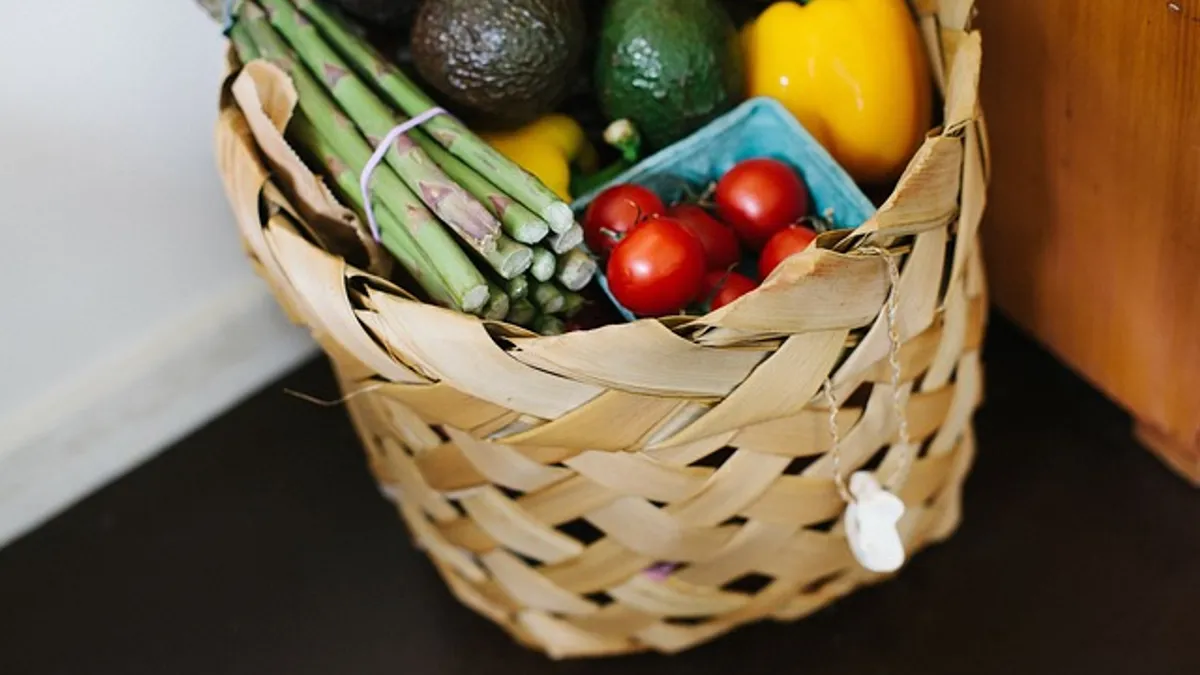Dive Brief:
- New research from the Retail Feedback Group finds that about a quarter of shoppers who use grocery delivery say that frozen food items do not meet their quality standards, reports Frozen & Refrigerated Buyer magazine.
- Based on their grocery home delivery shopping experiences, the RFG survey asked consumers to rate various grocery categories based on the following statement: “The items I received met my standards for quality and freshness.” Based on a five-point scale with five being the highest, produce scored the worst, with 39% of shoppers rating it between one and four. This was followed by frozen foods (26% rating the category between one and four), dairy (24%), fresh deli (20%), fresh prepared foods (17%) and seafood (13%).
- “The issue of a lower scoring quality rating [for frozen and refrigerated foods] might be centered around the cold chain and ensuring that the product stays stored at the proper temperature during the delivery and/or pickup process,” Brian Numainville, a principal at RFG, told Frozen & Refrigerated Buyer.
Dive Insight:
Despite rapid advancements and expansion of grocery click-and-collect and home delivery models, the ongoing struggle to solve the last mile continues. Execution and operational hurdles abound in the quest to adequately pick and satisfactorily deliver high-margin perishable products like produce and meat, as well as frozen and refrigerated foods that require controlled temperatures.
“Logistics on frozen and refrigerated products are a matter of technology, and the world of grocery e-commerce is getting better and better in these areas,” Jon Polin, co-founder and president of StorePower, commented on RetailWire.
Still, that last-mile cold chain remains elusive, as is evident based on RFG’s research findings. Until every Instacart and Shipt “shopper” is equipped with a specially designed vehicle with built-in temperature-controlled refrigerator and freezer compartments to ensure the integrity of perishable products, online retailers may need to cede these goods to the physical store.
As RW4 senior marketing manager Seth Nagle told Retail Wire, “Not everything in grocery needs to be accessible via digital and that’s OK." Shelf-stable goods like non-perishable canned, boxed and bottled goods — as well as health and beauty items — have easily transitioned to an online model. In fact, the Food Marketing Institute and Nielsen research projects that 40% of all center-store shopping will come from online shoppers by 2025.
As a result, grocers need to determine how to reinvent existing stores to best serve evolving shopper needs. It may mean reconfiguring physical space to focus on providing a convenient shopping experience dedicated to providing a stellar assortment in what are currently perimeter departments: fresh foods, refrigerated goods, prepared foods and foodservice, as well as other perishables like frozen foods.
A recent study by Morgan Stanley found that consumer dissatisfaction with online grocery shopping is increasing. But it’s important to keep in mind that this is still the early days for the category. As time goes on, retailers will learn how to make order fulfillment more efficient and effective, including better execution of last-mile delivery.














